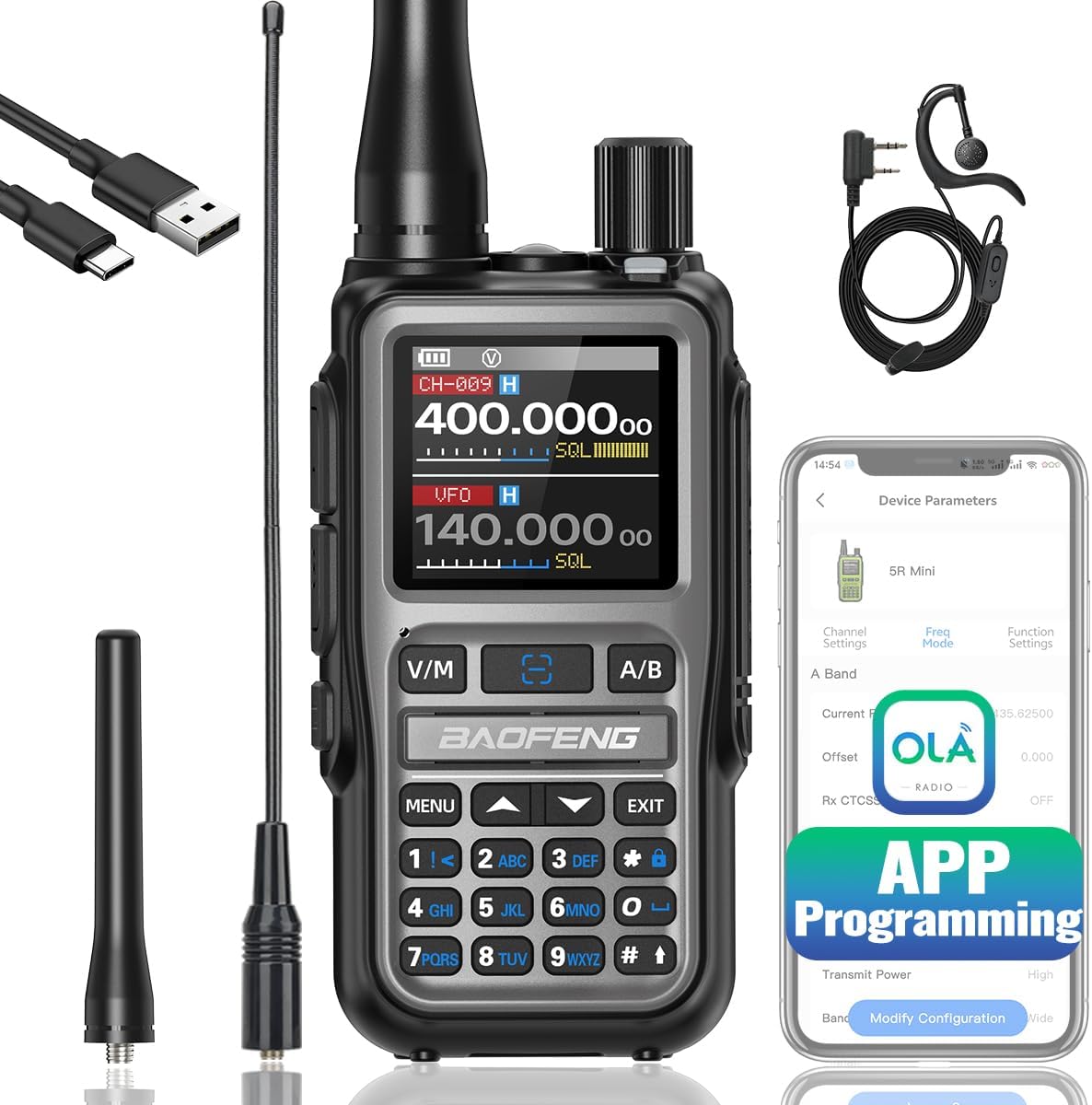
The Anytone AT-779UV has gained attention in the amateur radio community for its impressive features and affordability. This dual-band transceiver caters to both newcomers and seasoned operators, making it a versatile addition to any radio setup. In this review, we’ll dive into its specifications, performance, usability, and overall value.
Key Features
Dual-Band Operation: The AT-779UV covers both the VHF (136-174 MHz) and UHF (400-480 MHz) bands, allowing users to access a wide range of frequencies. This flexibility is ideal for various applications, from local communications to emergency services.
Power Output: With a maximum output of 25 watts on VHF and 20 watts on UHF, the AT-779UV provides ample power for most communications needs. Users can adjust power settings to conserve battery life or extend range as required.
Large LCD Display: The transceiver features a bright and clear LCD screen, making it easy to read under various lighting conditions. The display shows essential information, including frequency, channel, and battery status.
Multiple Operating Modes: The AT-779UV supports several modes, including FM and digital modes. This versatility allows operators to adapt to different communication scenarios, enhancing the device's overall utility.
Programmable Memory Channels: With up to 200 programmable memory channels, users can store frequently used frequencies for quick access. The built-in scanning feature helps find active channels, making it user-friendly for beginners.
Built-In CTCSS/DCS: The inclusion of Continuous Tone-Coded Squelch System (CTCSS) and Digital-Coded Squelch (DCS) adds a layer of privacy and reduces unwanted transmissions, which is particularly useful in crowded bands.
Performance
In terms of performance, the AT-779UV holds its own. Users have reported clear audio quality and reliable transmission, even in challenging conditions. The receiver is sensitive and capable of picking up distant signals, while the audio output is crisp and clear.
During field tests, the radio demonstrated impressive range, maintaining clear communications over several miles without significant loss in quality. The dual-band capabilities are a significant plus, allowing users to switch between VHF and UHF as needed, depending on the situation.
Usability
One of the standout features of the AT-779UV is its user-friendly design. The layout of buttons and controls is intuitive, making it easy to navigate through settings and options. The manual, although somewhat sparse, covers the basics adequately, allowing users to get up and running quickly.
The large LCD screen is another highlight, displaying information clearly and providing a straightforward interface for channel selection and other functions. The inclusion of backlighting ensures usability in low-light conditions.
Build Quality and Portability
The AT-779UV boasts a sturdy build quality, with a rugged design that can withstand outdoor conditions. It’s compact and lightweight, making it suitable for portable use, whether you’re out in the field or at home.
Value for Money
At its price point, the Anytone AT-779UV offers excellent value for both beginners and experienced operators. The combination of features, performance, and usability makes it a strong contender in the market for dual-band transceivers.
Conclusion
The Anytone AT-779UV is a solid dual-band transceiver that impresses with its feature set, performance, and affordability. Whether you're a newcomer to amateur radio or an experienced operator looking for a reliable secondary rig, the AT-779UV delivers on multiple fronts. Its versatility and ease of use make it a recommended choice for anyone looking to expand their communication capabilities.

No comments:
Post a Comment